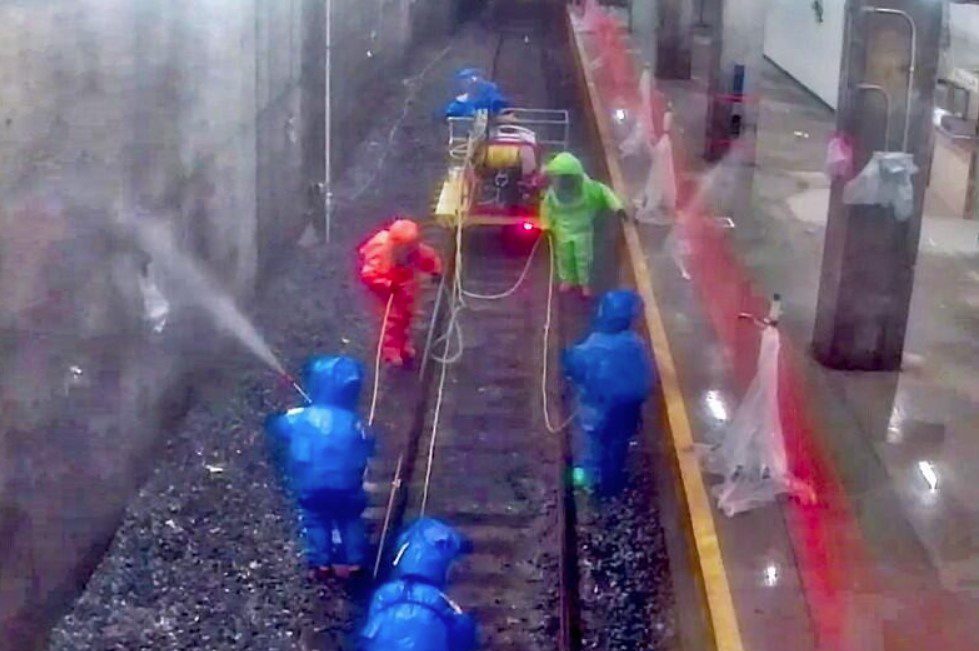Study will help officials understand how potentially hazardous aerosols may transport above and below ground if a real biological or chemical event takes place
Sampling and sensor equipment will be set up at more than 120 stations and outdoor locations throughout Manhattan and the surrounding boroughs of Brooklyn, Queens, Bronx and Staten Island
Using harmless simulants and over 120 detectors, federal researchers and local agencies will partner from 18-29 October to conduct a large-scale threat air sampling study in New York City with the goal of understanding how threat agents disperse in urban environments in order to better equip cities to respond to hazardous material events.
On each of the planned test days, the team will release small quantities of safe, non-toxic materials in several subway stations and above-ground locations. These materials are used only for collection and concentration analysis. The results from the tests will be used to validate airflow and transport models and the relationship between the subway and street-level environments.
A variety of sampling and sensor equipment will be set up at more than 120 stations and outdoor locations throughout Manhattan and the surrounding boroughs of Brooklyn, Queens, Bronx and Staten Island. The equipment will be clearly marked and will not inconvenience nor disrupt the normal activities of the public.
The researchers will take samples of the harmless particulates and gases and measure how far they have traveled and what their concentration is when found. The data collected will help transit officials and emergency management professionals with strategies for incident response activities.
This study, which will be conducted by scientists from Massachusetts Institute of Technology-Lincoln Laboratory (MIT-LL) and multiple Department of Energy National Laboratories experts from Argonne, Brookhaven, Los Alamos, Lawrence Berkeley and Lawrence Livermore, is part of the Department of Homeland Security (DHS) Science and Technology Directorate (S&T) Urban Threat Dispersion (UTD) program. UTD is a follow-on to previous smaller scale testing and airflow studies conducted in Washington, Boston and New York.
“The goal of these tests is to deliver actionable information to emergency preparedness planning authorities for potential wide-area release of dangerous chemicals or biological materials,” said Kathryn Coulter Mitchell, DHS Senior Official Performing the Duties of the Under Secretary for Science and Technology. “Lessons learned now will help refine and verify airflow and dispersion models that will inform response protocols and keep our citizens, critical infrastructure including hospitals, police and fire stations, and our transit systems safe.”
S&T is collaborating with federal, state and local stakeholders, including the Metropolitan Transportation Authority, New York City Police Department, New York City Department of Health and Mental Hygiene, New York City Department of Parks and Recreation, Amtrak, New Jersey Transit, the Port Authority of New York and New Jersey, National Guard Bureau Civil Support Teams, New Jersey Department of Health, and the U.S. Environmental Protection Agency.
“This study will help specify the extent of ‘contamination,’ so officials understand how potentially hazardous aerosols may transport above and below ground and be able to direct response and recovery actions if a real biological or chemical event takes place,” said Dr. Don Bansleben, S&T UTD Program Manager. “The study will ultimately help enhance the resiliency of a large urban center such as New York City.”
This study poses no health risks to the general public. The materials used are safe; they have not only been used in numerous other indoor and outdoor airflow and contaminant spread studies, but also the maximum concentrations are many times lower than the most conservative exposure limits and decrease very rapidly with distance from the tracer sources. A full environmental assessment was conducted by DHS.
Source: Adapted from DHS S&T



